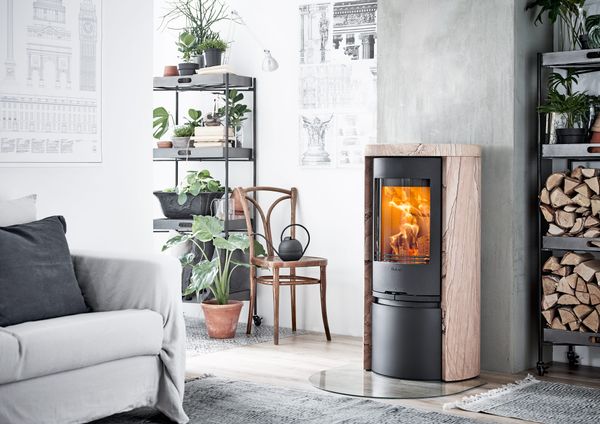A Guide to Caring for Houseplants – Contura expert provides tips to ensure houseplants flourish.
With Instagram searches for #houseplants generating over three million results, the popularity for greenery indoors shows little sign of abating.
Beloved by millennials and interior designers alike for their versatility and ability to enhance any room, houseplants are here to stay.
While we’re spending more time at home, why not add a ‘houseplant audit’ to your to-do list? This will enable you to troubleshoot any issues early on and ensure your plants continue to flourish at their best.
Catharina Björkman, lifestyle expert at Swedish wood burning stove brand, Contura, has given her guide to how best to care for houseplants.
Catharina says: “During testing times, as we’re experiencing now, a plant flourishing and growing can provide a much-needed boost to our mental health. Seeing a new bud appear or a flower open gives us a sense of achievement and happiness – it reminds us that life carries on, even when we’re confined at home.
“Plant care is really a form of self-care; as we nurture and care for our plants, so we nurture and care for ourselves.
“It’s often thought that people can be split into those that are green-fingered and those that can kill plants just by looking at them, but with care and attention, anyone can ensure their plants are healthy. And, if done the right way, taking care of plants is a meditative process, rather than a chore.”

Read on for the full tips.
Dust the leaves
We all know that plants need water and sunlight to flourish, but did you know that dusting the leaves is also important? Dust build-up prevents leaves from taking in optimal sunlight, which then impacts the photosynthesis process and lessens the plant’s ability to thrive. To shine the leaves, you can use a cloth and combination of milk and water, Baby Bio Leaf Shine spray or even the inside of a banana skin. Dust plants every few days for optimal sunshine intake and make sure to clean both the topside and bottom side of each leaf.
Rotate your plants
You may notice plants in dark places or positioned against a wall have duller coloured leaves and are not as strong as those facing the sun, so rotate plants between sunny patches so they each benefit from a dose of sunshine. Match your plant to where you have sunshine and/or shade. Ivy, cactus, ferns and conifers all grow well in shaded areas, whereas flowering plants do better in sunny places. Resist the urge to place plants in direct sunlight as this can be too hot for some plant types. Instead rotate between lighter and shadier areas.
Troubleshoot any issues
The good thing about houseplants is that it’s easy to tell if they are struggling. Discoloured leaves, a drooping stem, no longer standing tall; there are plenty of signs to spot. However, there is no one solution when a plant isn’t doing well so it’s worth trying a few different things to try and restore it.
Sometimes it can be too much or too little water, so hold back on watering if you’ve been giving a plant a lot of water lately. Similarly, soak the plant and ensure it has drained well if you haven’t watered it for a while. The moisture content of the soil should indicate if a plant is due a water or not.
If they aren’t getting enough light, leaves will turn yellow or brown and be far slower to develop. Move the plant to a sunnier spot and give it a feed for an added boost (plant feed available in supermarkets). Check the soil surface and leaves for any bugs or mites and spray these with pest killer.
Cutting back & pruning
To help renew houseplants, particularly if they’re looking a bit tired, is to give them a haircut. Pruning helps with shaping, removes any dead leaves and flowers and results in new, stronger growth. The plant will be healthier if well-trimmed and maintained. It’s a bit like cutting split ends from our hair to allow new, healthier hair to grow.
For flowering plants, de-head dead flowers frequently as this will encourage new flowers to grow during each blossom cycle. Slow-growing or tree-type houseplants do not do well with major cutting back – avoid pruning palms, pines and orchids.
Gardening tools
All plant connoisseurs need a few items to hand to make caring for houseplants easy. A small pair of scissors for dead heading (removing dead leaves, stalks and flowers), plant feed to boost any sad looking plants and a water spritzer/sprayer are a few essential items. It’s best to wear protective apron or clothes you don’t mind getting potentially dirty.
Lilly Light


